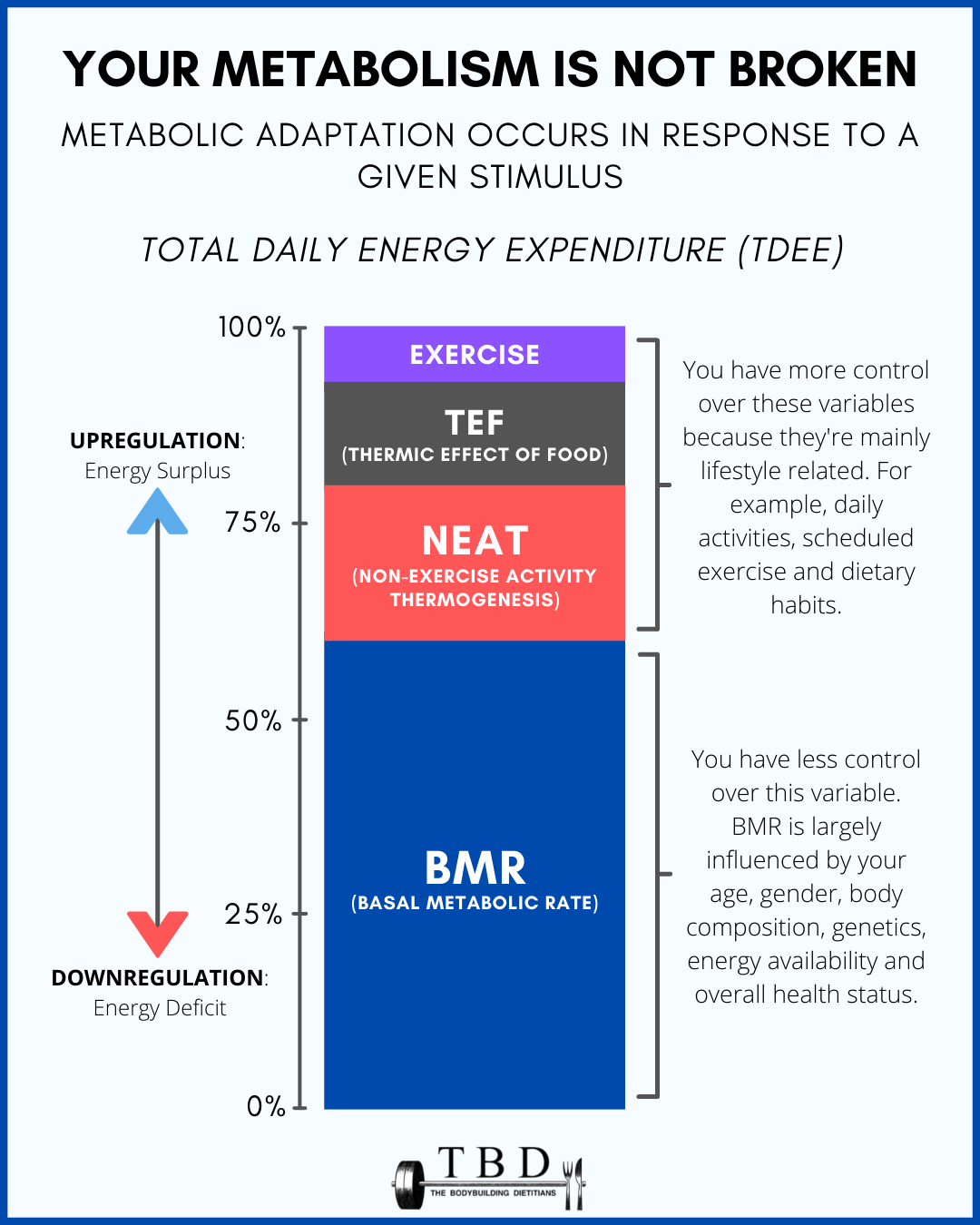The metabolism comprises all of the chemical processes that occur within living organisms in order to maintain and sustain life. These processes can be both anabolic and catabolic in nature. For example, the food we eat, the lifestyle we lead, and our overall health status will influence our metabolism and how we build and break down substrates and tissues in the human body.
The great news is that a metabolism cannot be “broken”, however it can be up-regulated and down-regulated. The above infographic illustrates the different components that influence our metabolism, and to what degree these contribute to total daily energy expenditure (TDEE). Take note that you have more control over some variables than others. Therefore, if your goal is to increase or decrease your TDEE then it is encouraged that you primarily focus on manipulating NEAT, TEF, and daily exercise, as this will have a downstream effect on BMR. Also, bear in mind that it is a normal physiological response for the metabolism to be up-regulated or down-regulated based on chronic caloric intake and whether or not an individual is in a calorie surplus or deficit.
When in a caloric deficit, the body will naturally decrease resting heart rate and respiratory rate as a means of conserving energy, two factors which are outside your control. Consuming less energy is also likely to decrease TEF due to less digestive demands, as well as lower subconscious levels of NEAT (aka fidgeting, pacing, hand gestures etc.), and potentially through a lower inclination to exercise intensely. However, when in a calorie surplus, not only does the body up-regulate the “speed” of these systems (heart rate, respiratory rate, cell turnover), but it will also increase daily NEAT, TEF due to eating more, and the ability to train at a higher intensity for longer durations.
We hope that you can use this information and knowledge to your advantage to better understand “why” your body is responding differently at various phases of your health and fitness journey!
